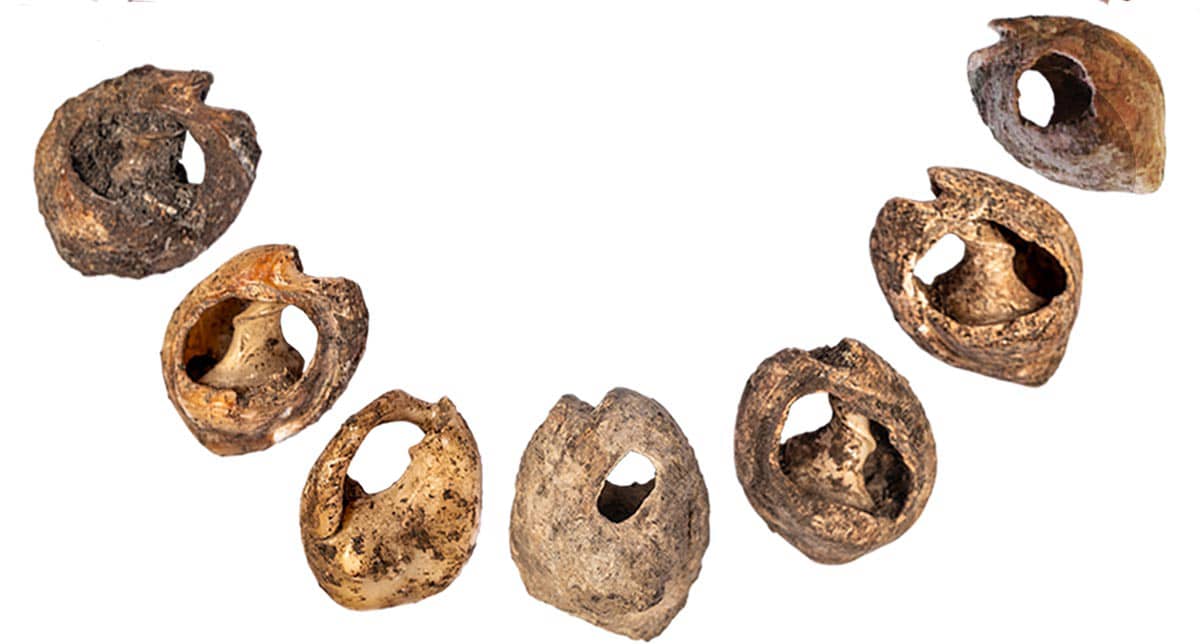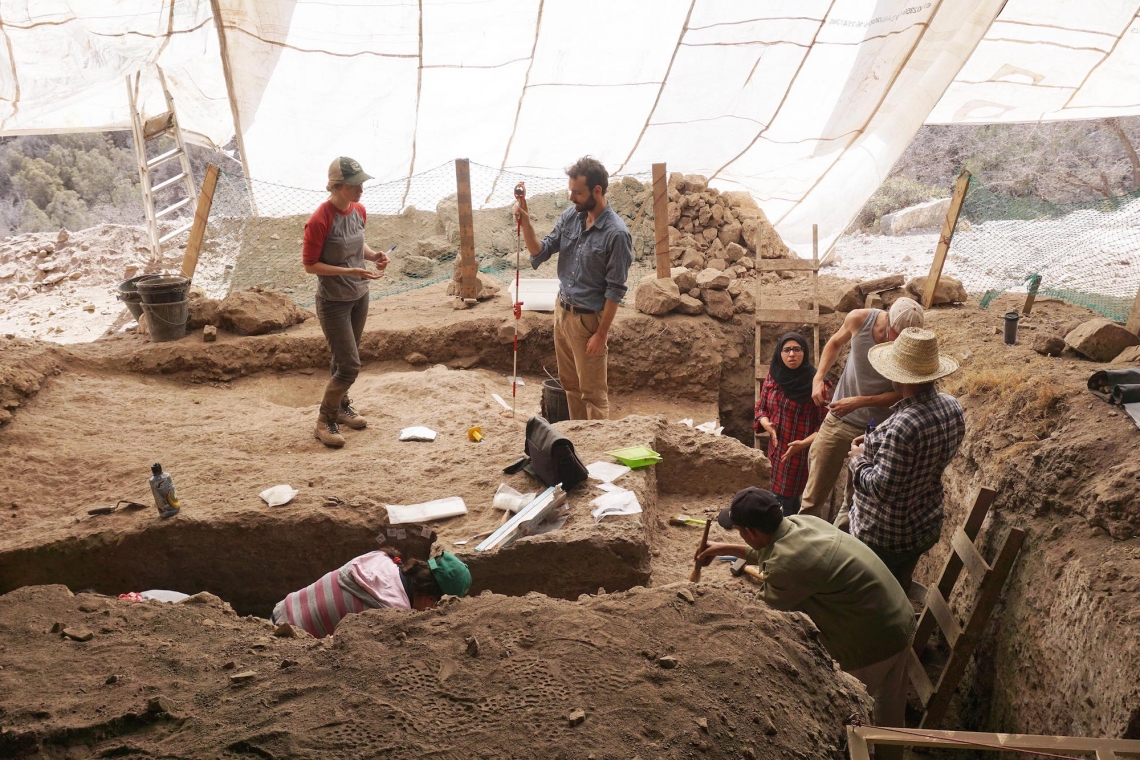
(Credit: Abdeljalil Bouzouggar)
Ancient beads are the earliest sign of communication with fashion
The beads are some of the earliest evidence of people expressing identity with clothing. "They're the tip of the iceberg for that kind of human trait."
Researchers have found shell beads in a cave in Morocco that are at least 142,000 years old.
The researchers say they’re the earliest known evidence of humans communicating about themselves through their attire. The find also sheds new light on how humans’ cognitive abilities and social interactions evolved.
“They were probably part of the way people expressed their identity with their clothing,” says Steven L. Kuhn, a professor of anthropology in the University of Arizona College of Social and Behavioral Sciences.
“They’re the tip of the iceberg for that kind of human trait. They show that it was present even hundreds of thousands of years ago, and that humans were interested in communicating to bigger groups of people than their immediate friends and family.”

How does this ancient form of communication show up today? It happens often, Kuhn says.
“You think about how society works—somebody’s tailgating you in traffic, honking their horn and flashing their lights, and you think, ‘What’s your problem?'” Kuhn says. “But if you see they’re wearing a blue uniform and a peaked cap, you realize it’s a police officer pulling you over.”
Shells: a fossilized form of basic communication
Kuhn and an international team of archaeologists recovered the 33 beads between 2014 and 2018 near the mouth of Bizmoune Cave, about 10 miles inland from Essaouira, a city on Morocco’s Atlantic coast.
Kuhn co-directs archaeological research at Bizmoune Cave with Abdeljalil Bouzouggar, a professor at the National Institute of Archaeological Sciences and Heritage in Rabat, Morocco, and Phillipe Fernandez, from the University Aix-Marseille in France, who are coauthors of the study.
El Mehdi Sehasseh, a graduate student at the National Institute of Archaeological Sciences and Heritage, who did the detailed study of the beads, is lead author of the study, published in Science Advances .
The beads are made from sea snail shells, and each measures roughly half an inch long. Holes in the center of the beads, as well as other markings from wear and tear, indicate that they were hung on strings or from clothing, Kuhn says.
The beads are like many others found at sites throughout northern and southern Africa, but previous examples date back to no older than 130,000 years. Ancient beads from North Africa are associated with the Aterian, a Middle Stone Age culture known for its distinctive stemmed spear points, whose people hunted gazelles, wildebeest, warthogs, and rhinoceros, among other animals.
The beads serve as potential clues for anthropologists studying the evolution of human cognition and communication. Researchers have long been interested in when language appeared. But there was no material record of language until just a few thousand years ago, when humans began writing things down.
The beads, Kuhn says, are essentially a fossilized form of basic communication. “We don’t know what they meant, but they’re clearly symbolic objects that were deployed in a way that other people could see them,” he says.
More questions than answers
The beads are also notable for their lasting form. Rather than painting their bodies or faces with ochre or charcoal, as many people did, the beads’ makers made something more permanent, Kuhn says, suggesting the message they intended to convey was a lasting and important one.
In many ways, the beads raise more questions than they answer. Kuhn says he and his colleagues are now interested in learning why the Aterian people felt the need to make the beads when they did. They’re exploring several possible explanations. One, Kuhn says, involves a growing population; as more people began occupying North Africa, they may have needed ways to identify themselves.
It is also possible that people in North Africa started using the method of communication at a time when the climate was cold and dry. They may have developed clans or other allegiances to protect limited resources, then perhaps used the beads to express their ethnicity or other identity to show they belonged in a certain area, Kuhn says.
“It’s one thing to know that people were capable of making them,” Kuhn says, “but then the question becomes, ‘OK, what stimulated them to do it?'”
Source: University of Arizona
The post Ancient beads are the earliest sign of communication with fashion appeared first on Futurity .
Share this article:
This article uses material from the Futurity article, and is licenced under a CC BY-SA 4.0 International License. Images, videos and audio are available under their respective licenses.
Related Articles:
Video conferencing can tank collective intelligence
April 16, 2021 • futurityAuto ‘politeness transfer’ softens blunt work messages
July 1, 2020 • futurityLinks/images:
- https://www.futurity.org/lothagam-north-pillar-site-cemetery-1845592-2/
- https://www.futurity.org/savoring-conversations-2000022/
- https://doi.org/10.1126/sciadv.abi8620
- https://www.futurity.org/neanderthal-eagle-talon-jewelry-874642/
- https://www.futurity.org/linear-a-language-minoan-2213082-2/
- https://www.futurity.org/cremated-human-remains-tracing-2404912/
- https://news.arizona.edu/story/those-earrings-are-so-last-year-reason-youre-wearing-them-ancient
- https://www.futurity.org/shell-beads-communication-2631522-2/
- https://www.futurity.org


